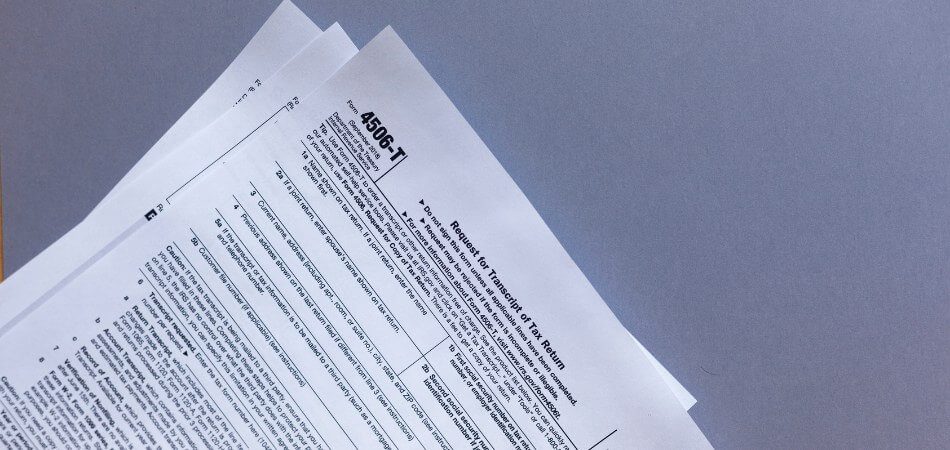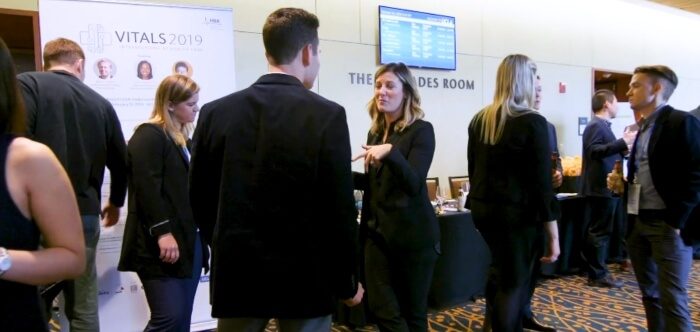In the world of event planning, securing sponsorships can turn a good conference into a great one. Sponsorships play a crucial role in increasing the scope, reach, and impact of your event. If you’re wondering “How to write a letter requesting sponsorship for a conference?”, then the key lies in the right approach.
To write an effective sponsorship request letter, start with a clear introduction about your organization and conference. Detail the sponsorship opportunity, highlighting how it aligns with the sponsor’s goals and interests. Provide a clear description of the benefits of sponsorship, including branding exposure and networking opportunities.
Are you curious about the process of securing sponsorships? This article will provide all the necessary information to help you craft a compelling sponsorship request letter that attracts the right sponsors for your event. Keep reading to discover valuable insights!
Why Do Conferences Require Sponsorship?
Professionals, industry leaders, and enthusiasts from various fields gather at conferences. These events often succeed in effective sponsorship. Sponsorships not only improve the quality and reach of a conference but also offer numerous advantages to both the organizers of the conference and the sponsors.
Financial Support
Securing financial backing is crucial for covering the myriad costs associated with organizing a conference. Sponsorships help in offsetting expenses such as venue hire, costs associated with speakers, and promotional activities. This financial injection allows for a higher quality event, potentially attracting more attendees and offering a better experience, which is essential for a successful conference sponsorship request letter.
Increased Reputation and Prestige
The involvement of reputable sponsors can significantly elevate a conference’s status. It signals to potential attendees and other stakeholders that the event is of high importance and value. This improved perception leads to increased interest and participation, furthering the conference’s impact and success.
Access to Marketing and Promotion
Sponsors often have large marketing resources and networks. Their involvement means access to broader promotional channels, extending the conference’s visibility. This symbiotic relationship benefits both parties: the event gains exposure while sponsors reach their target audience more effectively.
Networking Opportunities
Conferences rely on the networking opportunities they provide. Sponsorship introduces a new tier of participants, including influential businesses and industry leaders. These connections can lead to future collaborations, knowledge sharing, and the opening of new business avenues for both the organizers and attendees.
Resource and Expertise Sharing
A sponsor can contribute more than just financial support; they can also contribute expertise, technology, and manpower. This resource sharing is invaluable in enhancing the overall quality and efficiency of the conference. It ensures a more professionally organized event, which, in turn, reflects positively on both the sponsors and the organizers.
Besides providing financial support for conferences, sponsorships boost growth, credibility, and reach through strategic partnerships. Organizing a successful conference that leaves a lasting impression on everyone requires understanding and maximizing these benefits.
Types of Sponsors a Conference Needs
Organizing a successful conference often hinges on the diversity and quality of its sponsors. Different types of sponsors bring unique contributions, enhancing various aspects of the event. Recognizing and attracting a variety of sponsors is crucial for a well-rounded and impactful conference.
Title Sponsor
It is often the title sponsor that contributes the largest portion of funding to a project. In return, they receive prominent branding opportunities, including naming rights. Their name becomes synonymous with the conference, offering maximum exposure. This type of sponsorship is typically sought after by leading companies in the relevant industry.
Media Sponsor
A media sponsor can help the conference reach a wider audience. They offer advertising space across their channels, significantly boosting event promotion. In exchange, they gain access to a targeted audience and content for their platforms. Media sponsors are typically prestigious publications or broadcast networks.
Technology Sponsor
Providing audio-visual equipment and software platforms, technology sponsors provide technical support. Their contribution is critical in today’s digital and hybrid conference environments. They benefit from showcasing their products to a tech-savvy audience. These sponsors are usually tech companies or service providers.
Food and Beverage Sponsor
Adding food and beverage sponsors to the event adds an extra layer of comfort and luxury. They supply meals, snacks, or drinks, enhancing the attendee experience. This sponsorship is a unique opportunity for catering companies or food and beverage brands to showcase their offerings.
Exhibitor Sponsor
Exhibitor sponsors receive space to showcase their products or services directly to attendees. This hands-on approach allows for immediate engagement and feedback. They are crucial for conferences with a trade show component. These sponsors range from startups to established industry players.
A mix of sponsor types improves a conference, each adding unique value. From financial support to enhancing the attendee experience, the variety ensures a dynamic and well-supported event. Understanding the distinct roles and benefits of each sponsor type is key to creating a successful and memorable conference.
How to Write a Letter Requesting Sponsorship for a Conference?
Planning a conference requires securing sponsorships, which requires a persuasive letter. In order to attract the right sponsors for your event, you must write an effective sponsorship request letter that clearly communicates the value of the conference and the benefits to the sponsor.
Step 1: Introduction and Conference Overview
Start your letter with a brief introduction to your organization and the conference. Outline the conference’s theme, goals, and target audience. This sets the context and engages the potential sponsor’s interest from the outset.
Step 2: Detail the Sponsorship Opportunity
Explain the sponsorship opportunity, highlighting how it aligns with the sponsor’s interests or goals. Highlight key aspects like audience demographics and expected attendance. This demonstrates an understanding of the sponsor’s potential return on investment.
Step 3: Outline Sponsorship Benefits
Clearly articulate the benefits to the sponsor, such as brand exposure and networking opportunities. Specify tangible perks like logo placement, speaking opportunities, or exhibition space. This section should make the value proposition for the sponsor explicit and encourage them to become a sponsor or exhibitor of conference.
Step 4: Present Customizable Options
Offer different levels of sponsorship or customizable packages. This flexibility allows potential sponsors to choose an option that suits their budget and marketing goals. It shows your willingness to collaborate and create a mutually beneficial partnership.
Step 5: Share Past Success Stories
Incorporate examples of past successful sponsorships and how they benefited previous sponsors. Sharing testimonials or data on attendance and engagement can strengthen your reputation and provide evidence of the potential return on investment.
Step 6: Include a Call to Action
Conclude with a strong call to action, inviting the sponsor to contact you for further discussion. Provide your contact details and suggest a meeting or call to talk more. This encourages immediate action and shows an eagerness to engage.
You need a well-structured sponsorship request letter to secure valuable partnerships. Your event will be a success if you clearly outline sponsors’ benefits and demonstrate flexibility in your offerings. Create a win-win situation that benefits both parties.
Considerations While Writing a Letter Requesting Sponsorship for a Conference
Writing a letter requesting sponsorship for a conference requires careful consideration to ensure its effectiveness and appeal. The goal is to capture potential sponsors’ interest by clearly communicating the value and relevance of the event. Each aspect of the letter is crucial in securing the necessary support.
- Understand the Sponsor’s Perspective: Design your letter to align with the sponsor’s business goals and interests. Highlighting mutual benefits creates a sense of partnership and collaboration.
- Clarity and Conciseness: Keep the letter focused and to the point. Avoid overloading with unnecessary details; highlight critical points such as audience demographics and sponsorship benefits.
- Professional Tone: Maintain a professional and respectful tone throughout the letter. It reflects the seriousness and credibility of your conference and organization.
- Customization Options: Offer various sponsorship levels or customizable packages. This flexibility caters to different budgets and marketing objectives, increasing your appeal to a broad range of sponsors.
- Call to Action: End with a clear call to action, encouraging potential sponsors to engage further. Provide contact details and suggest a follow-up meeting or conversation to discuss details.
Your letter will be well-positioned to attract the support you need if you focus on the sponsor’s perspective, maintain a precise and professional tone, and offer flexible sponsorship options. Establish a mutually beneficial relationship between your event and the sponsor.
Tips to Find the Right Sponsors for a Conference
A conference sponsor search requires an understanding of both the event’s needs and the objectives of potential sponsors. The key is to identify sponsors whose goals align with the theme and audience of your conference. Here are some tips to help you:
- Identify Industry Relevance: Look for companies within industries relevant to your conference’s theme. Their products or services should fit with your event’s focus and audience.
- Research Potential Sponsors’ Interests: Understand the marketing goals of potential sponsors. This helps in adjusting your proposal to their specific interests, increasing the likelihood of a partnership.
- Use Existing Networks: Utilize your professional network to identify and connect with potential sponsors. Personal connections can often lead to more open and successful sponsorship discussions.
- Analyze Sponsorship History: Investigate whether potential sponsors have previously supported similar events. Their past sponsorship activities can indicate their likelihood of supporting your conference.
- Highlight Audience Demographics: Showcase your conference’s audience demographics that align with the sponsor’s target market. This demonstrates the direct value they can gain from the sponsorship and facilitates securing conference funding.
Frequently Asked Questions
Writing a letter to request sponsorship for a conference can be a daunting task. It requires careful planning, clear communication, and a strategic approach to convince potential sponsors of the value and benefits of supporting your event. Below are some frequently asked questions to help you navigate the process.
What Information Should Be Included in a Sponsorship Request Letter?
A sponsorship request letter should include an introduction to your organization, a detailed overview of the conference, the benefits for the sponsor, and specific sponsorship opportunities. It’s essential to clearly articulate why the sponsor should invest in your event and how it aligns with their business goals.
How Can I Customize My Sponsorship Request to Different Sponsors?
When you customize your sponsorship request, you need to research the business objectives, target audience, and previous sponsorship activities of each potential sponsor. Customize your letter to highlight how your conference aligns with its goals and offers a unique opportunity to reach its audience effectively.
How Important Is It to Follow Up After Sending a Sponsorship Request?
Following up is crucial in sponsorship requests. A well-timed follow-up shows your commitment and keeps the conversation going. It’s a chance to address any questions the sponsor might have and reinforce the benefits of partnering with your event.
Can Offering Multiple Sponsorship Levels Increase My Chances of Success?
Yes, offering multiple sponsorship levels can increase your chances of success by providing options that cater to different budgets and marketing goals. This flexibility makes it easier for potential sponsors to find a level of participation that suits their needs.
How Should I Structure the Call to Action in My Sponsorship Letter?
The call to action in your sponsorship letter should be clear, direct, and compelling. Invite the sponsor to contact you for further discussion, suggest a meeting, or propose a call. Ensure you provide your contact details and express eagerness to collaborate, encouraging immediate engagement.
Wrap Up
The art of securing sponsorship for a conference involves a multifaceted approach. The key to success lies in understanding “How to write a letter requesting sponsorship for a conference?” and applying this knowledge effectively.
It’s about presenting a compelling case that aligns with potential sponsors’ interests, showcasing the unique opportunities your event offers, and clearly articulating the mutual benefits. Additionally, identifying the right types of sponsors and considering their perspectives is crucial.
By writing a well-thought-out sponsorship request letter, backed by strategic planning and thorough research, you can create partnerships that elevate your conference to new heights. Ultimately, the goal is to establish symbiotic relationships that benefit both the conference and its sponsors, leading to a successful and memorable event.








